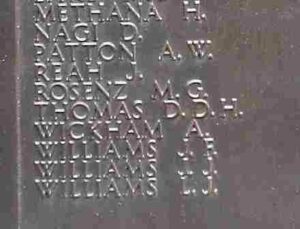Newcastle Emlyn is an ancient market town, lying on the River Teifi, and straddling the borders of Carmarthenshire and Ceredigion. The town is home to a ruined 13th Century Castle, which is situated to the north of the Teifi. The men of the town who fell during both World Wars are commemorated on a granite column which sits in the Memorial Gardens. There are also two fine marble War Memorials inside Ebenezer Chapel, which commemorate its members who fell during both World Wars. The photographs of the memorials were kindly sent in by Raymond Jones.

The Great War, 1914-1918
David Rees Davies, Private, 3rd Chemical Warfare Section, U.S. Army. David was born on 24 December 1892, the son of Benjamin and Anne Davies, of Bryndioddef, Newcastle Emlyn. He had served with the Royal Garrison Artillery prior to the war, before emigrating to America aboard the S.S. Lusitania on 21 March 1914. David enlisted in the USA into the 3rd Battalion, Chemical Warfare Service, American Expeditionary Force. He died in the USA on 11 October 1918, aged 25, and is buried at Jerusalem Cemetery, Wales, Waukesha, Wisconsin. The Memorial at Newcastle Emlyn states that David served with the 164th Depot Battalion, Royal Garrison Artillery, but his headstone states 3rd Battalion, Chemical Warfare Service. He is not commemorated by the CWGC or the ABMC. Many thanks to Raymond Jones for identifying David.
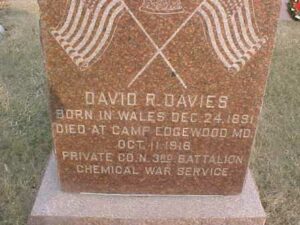
Harry Emlyn Jones, Driver, T2/025600, Royal Army Service Corps. Henry was the son of David and Lizzie Jones, of Graig Villa, Newcastle Emlyn. He served with the Horse Transport Section of the 12th Divisional Train, Army Service Corps, which served with the 12th (Eastern) Division. The Division had landed at Boulogne on 31 May 1915, and took over the line at Ploegsteert Wood. During the course of the war it fought at the Battle of Loos in 1915, and on the Somme in 1916. During 1917 it took part in the Battle of Arras, and at the Battle of Cambrai later that year. The Division relieved the 38th (Welsh) Division in the Fleurbaix sector in February 1918, and the following month moved to the Somme sector, where it became embroiled in the German offensive there, suffering heavy casualties. The division then rebuilt strength before taking part in the great offensive in August 1918, which ultimately won the war. Henry survived for most of the war, but died in France on the penultimate day of the war, on 10 November 1918, aged 25. He is buried at Brebieres British Cemetery, France.
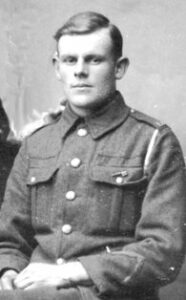
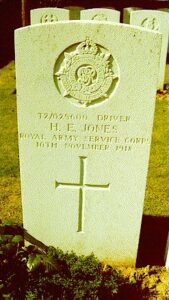
Titus Lewis, Private, 15661, Welsh Regiment. Titus was the son of Thomas and Mary Lewis, of Brynhyfryd, Adpar, Newcastle Emlyn. He enlisted at Neath into the 9th Battalion, Welsh Regiment, which was attached to 58 Brigade, 19th (Western) Division. The battalion moved to France on 18 July 1915, and moved with the division to positions near Loos, where it took part in the opening attack of the Battle of Loos on 25 September 1915. Titus was killed in action during this attack, on 25 September 1915. He was 25 years old, and is buried at Brown’s Road Military Cemetery, Festubert, France.
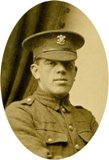
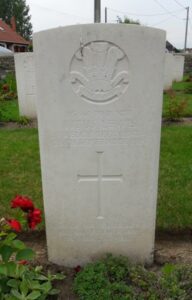
Evan Rees, Sapper, 62979, Royal Engineers. Evan was the son of Sarah Rees, of Dumfries House, Newcastle Emlyn. Prior to the war he lived at 4, Cornish Place, New Dock, Llanelli. He originally enlisted into the 2/1st Field Company, Royal Engineers, but was posted to France on 3 December 1915 with the 38th Division Signal Company, Royal Engineers, which was attached to the 38th (Welsh) Division. Evan survived the entire course of the war, but died of influenza in France on 23 November 1918, aged 29. He is buried at Caudry British Cemetery, France.
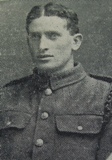
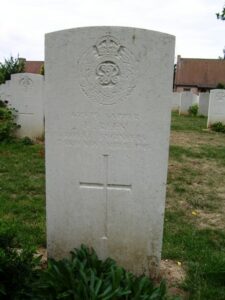
Evan Owen Thomas, Private, 24392, Welsh Regiment. Evan was the son of John and Betsy Thomas, of Brynteg, Adpar, Newcastle Emlyn. He resided at 38, North Street, Ferndale prior to the war and enlisted at Cardiff on 22 February 1915 into the 16th Battalion, Welsh Regiment, which was raised as the Cardiff City battalion. Evan trained with the battalion at Rhyl until being discharged as unfit on 12 July 1915, after being diagnosed with tuberculosis. He died at Newcastle Emlyn on 16 April 1920, aged 29, and is buried in Bryngwenith Chapelyard. His case has recently been forwarded to the CWGC as a result of my research.
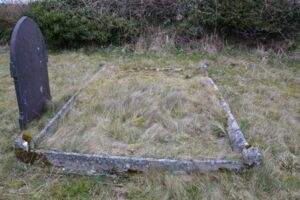
Sidney Frederick Walters, Second Mate, Mercantile Marine. Sidney was the son of John and Eleanor Walters, of Myrddin House, Lloyd’s Terrace, Newcastle Emlyn. He served in the Mercantile Marine, aboard the SS Eupion. The ship was off the coast of Southern Ireland on 3 October 1918 when it was torpedoed and sank by the German submarine UB-123. Sidney was one of three men whose bodies were washed ashore at Kilrush, and are now buried together at Kilrush Church of Ireland Churchyard. Due to a clerical error sometime in the past, Sidney is also remembered on the Tower Hill Memorial, London. He was 28 years old.
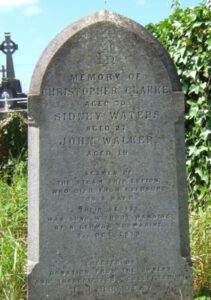
World War Two, 1939-1945
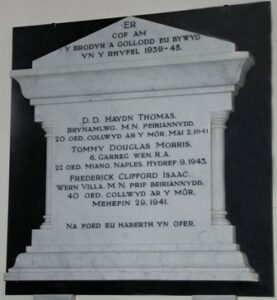
Frederick Clifford Isaac, Second Engineer Officer, Merchant Navy. Frederick served in the Merchant Navy, as Second Officer aboard the S.S. Rio Azul, a London registered cargo steamer. On 29 June 1941, she was on route from Pepel for Middlesbrough carrying a cargo of 6,700 tons of Iron ore, when she was torpedoed by the German submarine U-123 and sunk. Frederick drowned in the sinking of the ship that day. He was 41 years old, and is remembered on the Tower Hill Memorial, London.
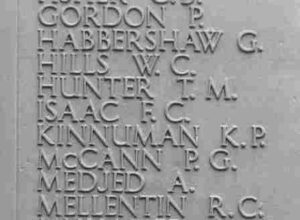
Tommy Douglas Morris, Gunner, 4209141, Royal Artillery. Tommy was the son of John and Elizabeth Morris, of Adpar, and served with the 146 (The Pembroke Yeomanry) Field Regiment, Royal Artillery. The Battery had served in North Africa during the Battle of El Alamein, and was one of the units that took part in the Invasion of Italy in 1943. Tommy was killed in action in Italy on 9 October 1943 aged 22, and is buried at Naples War Cemetery, Italy.
David Dan Haydn Thomas, Third Engineer Officer, Merchant Navy. David was the son of D. J. Thomas, and of Elizabeth J. Thomas, of Adpar, and served in the Merchant Navy, as an Engineer aboard the S.S. Parracombe (London). The Admiralty sent plans to the C-in-C Med, concerning the intended sailing of the SS Parracombe early in April, 1941. She was carrying about 12 Hurricanes, a number of Harvey projectors with their ammunition and other stores direct to Malta from Gibraltar, and was disguised as Vichy French, unescorted & manned by picked crew, with orders to be scuttled if captured. The Parracombe was attacked by Italian Torpedo Bombers and sunk on 2 May 1941, and David was killed. He was just 20 years old, and is remembered on the Tower Hill Memorial, London.
